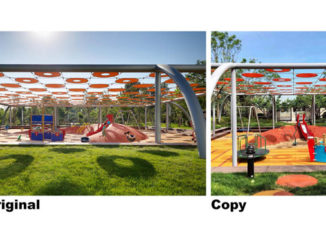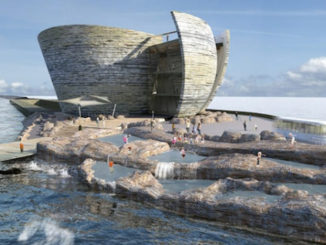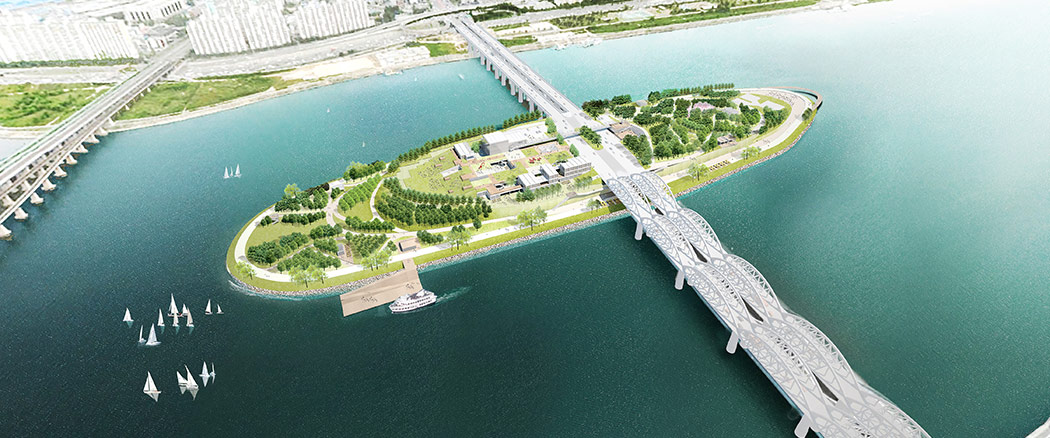
Background
Abandoned and forgotten for 40 years, Nodeul Island is an artificial island situated on Seoul’s Han River. The island used to be an artificial sand, constructed to support the Hangang bridge; the man-made beach was one of the locals’ favourite vacation destinations during the 1960s. Throughout the decades that followed, the body of the island gradually transformed as its ecosystem developed. Despite the proximity to the city center, the remote character of the island, coupled with its overgrowth, turned the island into a land forgotten by time. This project aims to reconfigure the ground form of the island; and create an inviting getaway where Seoul’s residents can interact with diverse cultural activities, and be harmonized with the natural landscape.

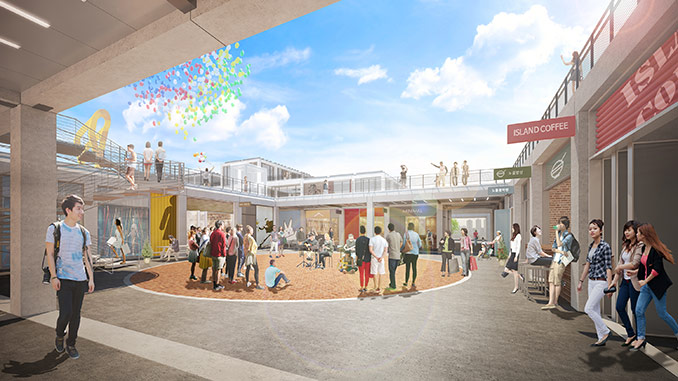
Nodeul Maeul : Reconfigured Ground
To mitigate the level difference between Yangnyeong-no Street—a bridge crossing through the island’s center—and the landscape below, multiple new ground levels are proposed. The upper level is a wide-open public space, with flexibility to offer diverse cultural events with temporary structures. Its landscape features provide visitors with both a park-like experience, and also spontaneous social interactions. Stadium seating on the west end of the upper level provides lower level access, and dedicated grandstands for Nodeul Madang—a large-scale outdoor event space. On the east side of the Yangnyeong-no Street, a multi-functional facility is located within the new pedestrian bridge, leading to an observation deck overlooking the island’s existing forest.
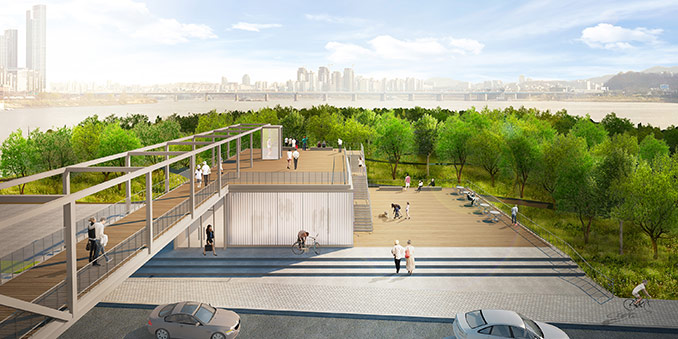
In contrast to the upper level, the lower level is designed to accommodate start-up offices, shops, restaurants, plazas, market street, and a 500-person performance hall. Traditional Korean village settings (referred to as Maeuls) evolve here: where a small community of different programs and user groups coexist in harmony. Stores, offices, and common areas arranged along plazas and alleys allow one to happen upon unexpected events. Through the open plazas and vertical connectivity, the lower and upper levels are visually, and physically, connected.
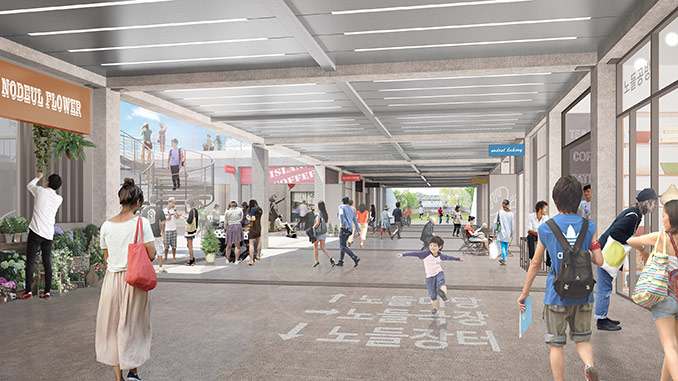
Modular Structural System
Nodeul Maeul’s new structural system will be composed of a 10 m x 10 m modular precast concrete grid, integrated with a pre-installed flexible MEP system. The expandability of the system allows for a ”participatory design”, where the architect provides the framework, and the spaces are defined by a response to the users’ evolving needs. This dynamic, community-driven, typology brings unique opportunities for users and visitors, creating a place filled with historical values and limitless potential.
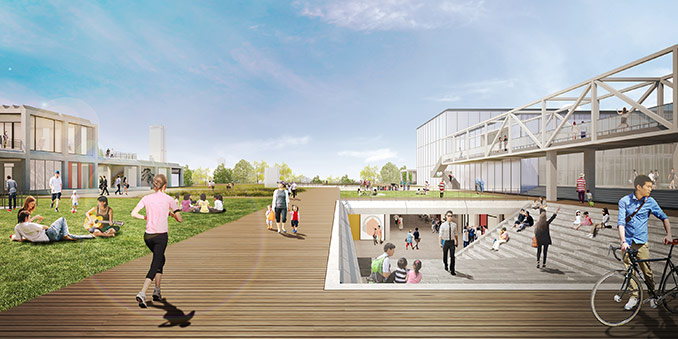
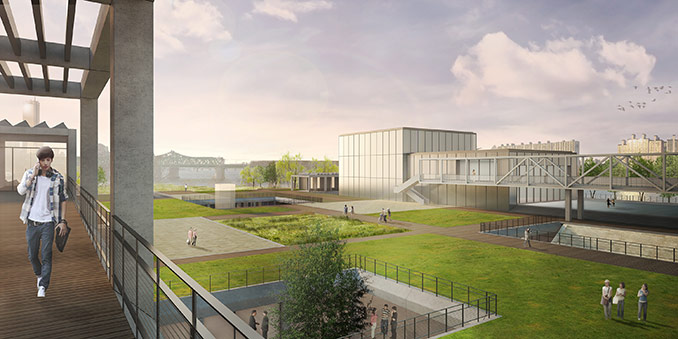
Landscape Concept
Connecting to the broader context of Han River, Nodeul Maeul’s new landscape concept creates two distinctive island characteristics: restore the wild nature of the island, while re-programming its natural features as a cultural venue. This opens and reconnects the island to the city and its people. The island’s new west side event space acts as a buffer between the architecturally programmed spaces, and the wild nature on the lower level.
Planting Strategy
The multi-faceted planting strategy has four distinct phases: preservation and removal of decaying plants, seeding and nurturing new plant-life, adding programmatic planting, and curating edge-defining planting. These strategies enhance the ecological system in the existing island forest by mixing old and new, and breathing new life into the forest to create a natural space to walk, stroll, rest, and explore.
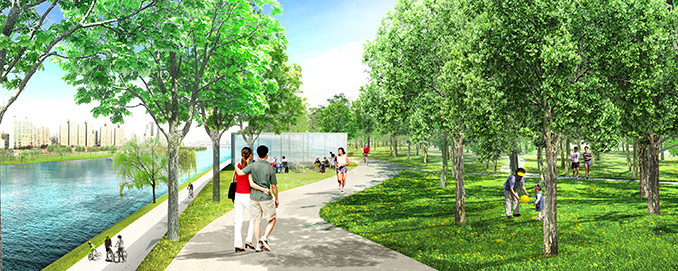
Looping Circulation
Framing the architecture and nature, the island is catalyzed by Upper and Lower circulation loops. The Upper Loop is a smaller radius, and connects the Eco-learning center, Han River observatory, Nodeul Forest, and the Lower Loop via a hill on the west side of Nodeul Madang. In contrast, the larger Lower Loop wraps the whole island with a promenade, urban beach, bike center, and observation deck. With two circulation loops, and diverse outdoor landscape programs, Nodeul Maeul will be entangled with social events, cultural experiences, and natural explorations.
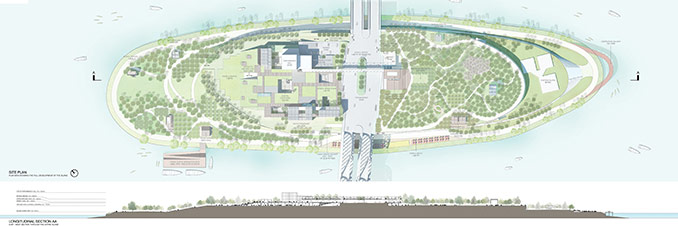
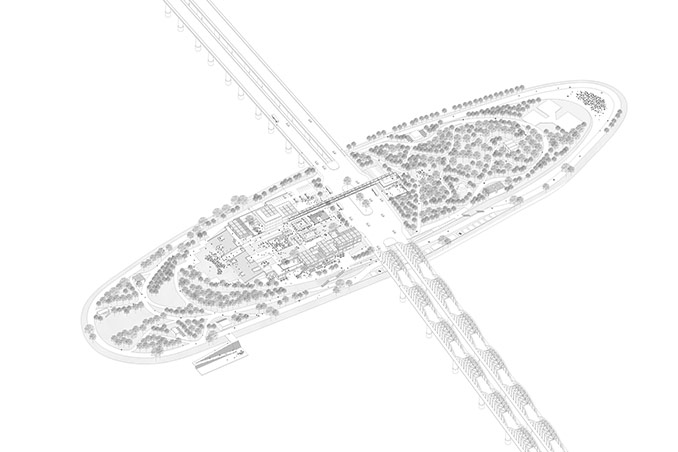
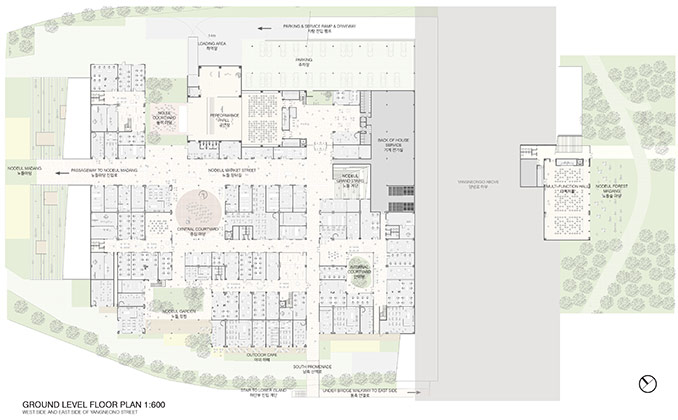
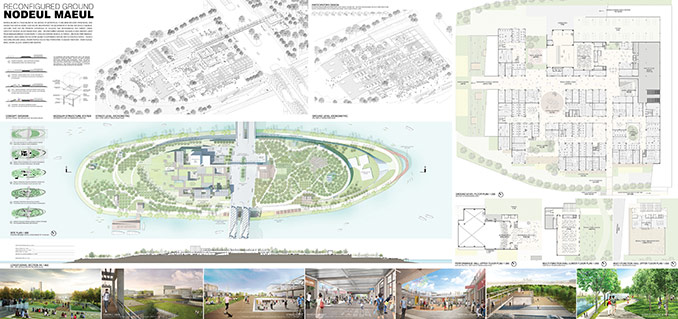
Find more information at following website http://nodeul.org/en/3rdannouncement-of-winners/
Design Team |
Studio MMK+ (Pilsoo Maing, Jihoon Kim, Donghwan Moon), Taehyung Park


